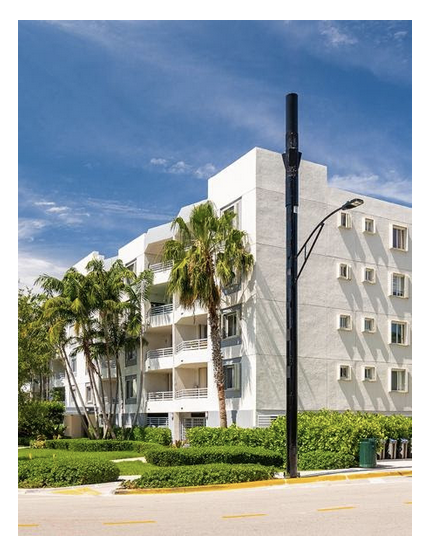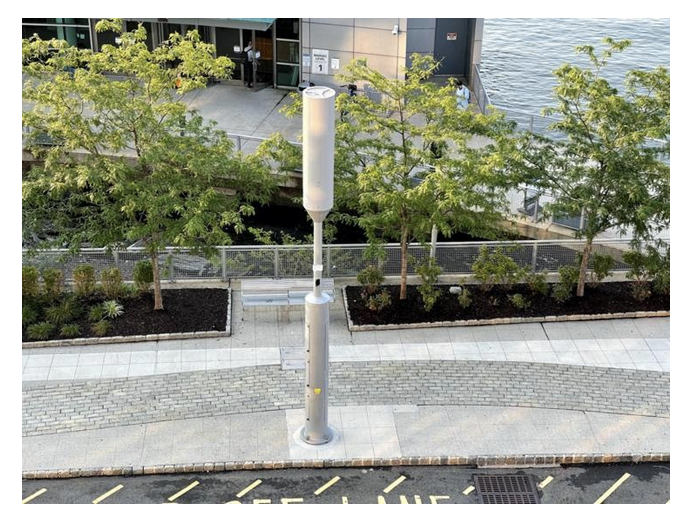By J. Sharpe Smith, Inside Towers Technology Editor

Raycap, who acquired Stealth® Concealment Solutions in 2018, is ready for those really large orders with thousands of poles, but in the meantime, it can easily handle smaller orders. “At Raycap, we got a chance to start from scratch in our designs, development, layout, and facility logistics,” Ken Wedholm, Raycap Eastern Regional Sales Manager representing the Stealth product line, told Inside Towers.
Each municipality wants to protect its cityscape, whether it is historic or modern, and each neighborhood has a unique aesthetic and requirement for its small cells. “Some cities don’t want the same poles that they have two cities over. They want something unique and special to them,” Wedholm said. “That’s why we’ve always been extremely nimble in our manufacturing capabilities. We have the capabilities to switch gears on a dime to manufacture a different product, type, style or configuration meeting any custom needs.”
Wedholm seems to relish the challenge of designing each solution through interaction with the various stakeholders. “A lot of time, problems are presented that we’ve never seen before,” Wedholm said. “But it’s an opportunity for us to learn something new and carry that on to the next municipality or the next project. And for me, that’s great.”

Today, Raycap provides all the components a carrier needs for small cell concealments including pole toppers, shrouds and other enclosures, power management solutions and factory integration. From delivering fully concealed or partially concealed small cell poles or side-mounted shrouds to pole toppers, bases, electric meters, AC disconnects, and surge protectors, Raycap is basically a one-stop-shop for macro and small cells projects. To fully integrate small cells, Raycap works with the OEMs, which provide detailed drawings of the products, or the actual products themselves. The final design of the small cell or concealment must precisely fit those components, and the result makes for an efficient installation.
Space is limited, especially in a small cell. The city will want to keep sites as streamlined as possible, particularly in a public right-of-way, while most carriers need to insert as much equipment (including radios and antennas) as possible. “We spend a lot of time with the carriers, in conjunction with the radio and antenna manufacturers, to specifically design around defined shapes and sizes,” Wedholm said. “We have the capabilities in-house to complete a design and analyze it to make sure it meets all of the requirements for LTE, 5G mmWave, C-band and future frequencies. We also have a full in-house thermal analysis lab that ensures we meet all the OEM’s highest standards.”
Although Raycap designs and builds its small cell concealments to the carriers’ specifications, there are a lot of steps involved in getting the small cell sites up and running. They must receive the green light from city planning and zoning, historical committees, and neighborhood boards, as well as the local utility provider.
“In the development of products, we go through many different stages,” Wedholm said. “It typically starts with an idea from a local construction manager or real estate person. They provide us with the proposed location as well as the equipment requirements and ask for a concept that will fit the parameters.”
In one example of how complicated designing a small cell can be, Raycap had to come up with a single design that needed the approval of the municipality and three carriers, all of which had different specifications for equipment, radios, shapes, sizes, and configurations.
“We worked directly with the municipality and each carrier to come up with a design that they all were comfortable with,” Wedholm said. “It took a fair amount of time, but we came up with a great design and in the end, there was no visual difference between each site. Mission accomplished.”
For more information about Raycap’s Stealth concealments, visit www.raycap.com.





Reader Interactions